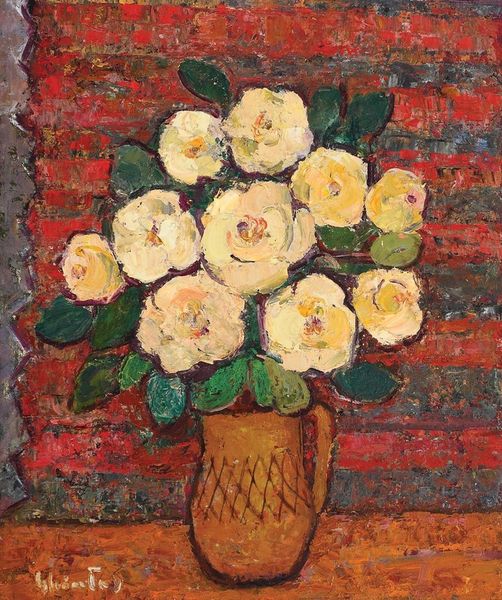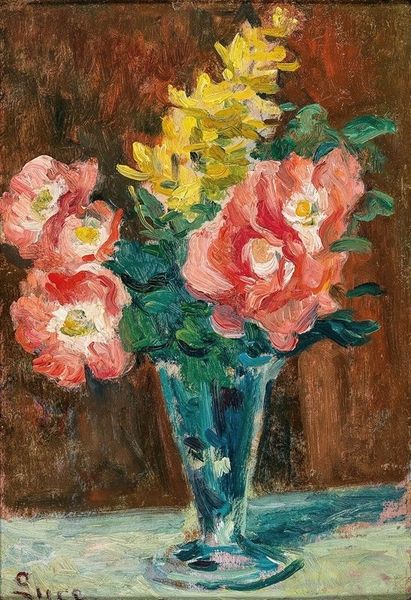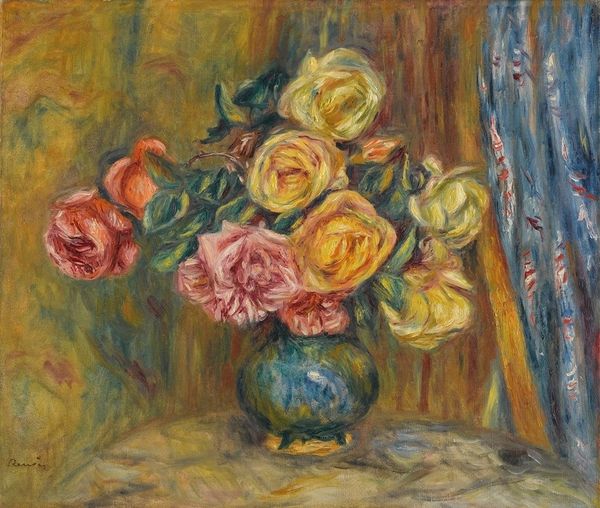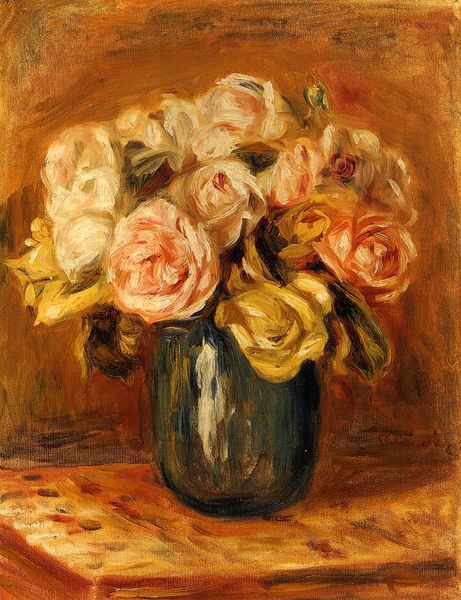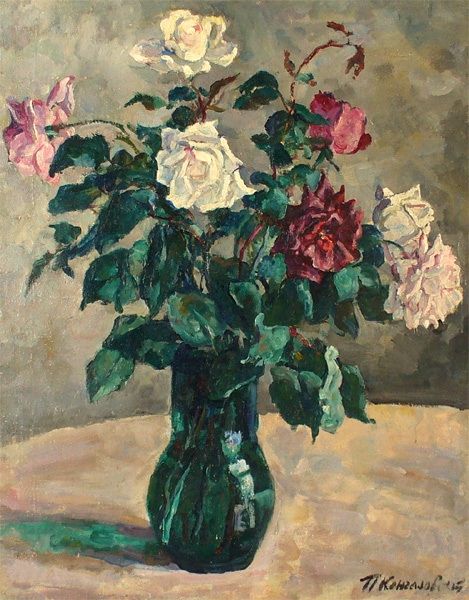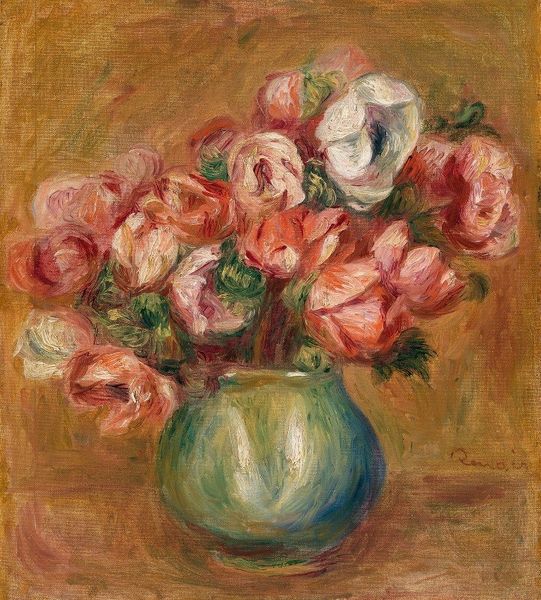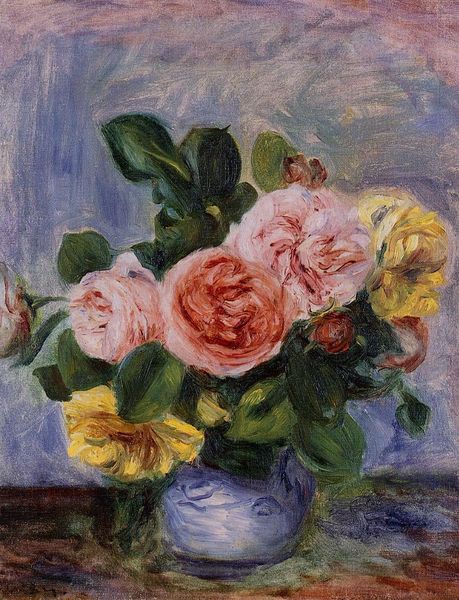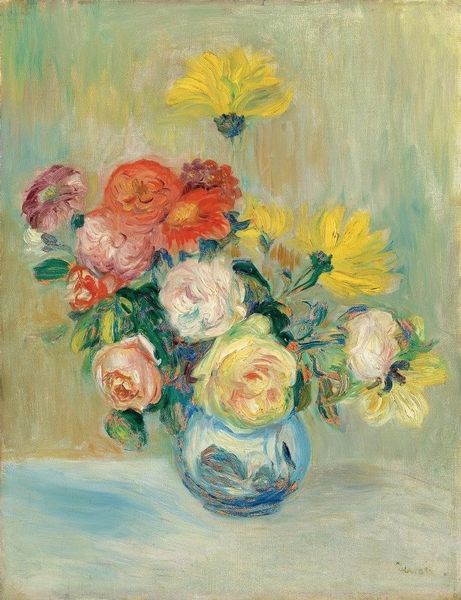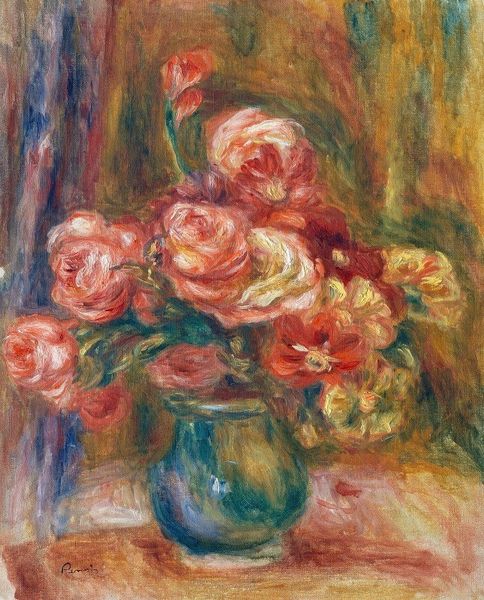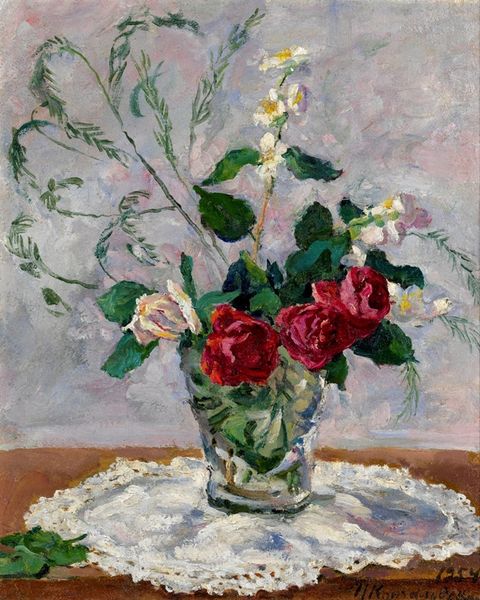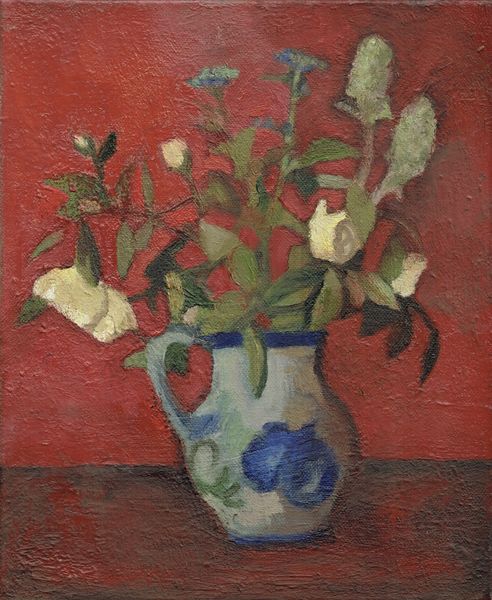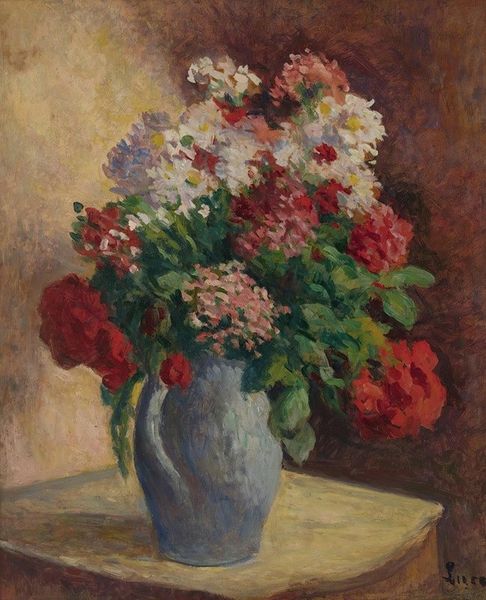
painting, oil-paint, photography
#
still-life
#
painting
#
oil-paint
#
flower
#
photography
#
realism
Copyright: Dumitru Ghiatza,Fair Use
Curator: Welcome. Here we have Dumitru Ghiatza’s painting titled "White Roses," an oil-on-canvas still life. Editor: It strikes me immediately as rather somber for a floral arrangement, doesn't it? The roses, though ostensibly white, possess a sort of muted, almost yellowish tone, set against that profoundly dark background. Curator: The somber quality is certainly there. Considering Ghiatza’s position as a significant figure in Romanian modernism, especially his involvement with artistic groups and exhibitions emphasizing social realism, one might ask if this still life subtly reflects on themes beyond mere aesthetic beauty. Is there perhaps a statement about mortality, considering the fleeting nature of flowers, intertwined with social or political contexts of his time? Editor: That’s a compelling proposition. Looking at the composition, the arrangement feels consciously constructed, doesn’t it? The positioning of the flowers within the vase, their asymmetrical arrangement, and that curious little red box off to the side… They aren't haphazardly placed. The texture itself—the visible brushstrokes of the oil paint—adds to this feeling of deliberate artistic intention. What might that box represent? Curator: Intriguing. While pure formalism might focus on the interplay of shapes and colours between the blooms and their setting, it would be remiss not to acknowledge that realism can be a strategic choice for conveying coded meanings. We might also investigate the art market’s role in valuing floral paintings during the early to mid-20th century, and how a painting such as this could serve as commentary. Editor: And observe how the background seems to bleed into the roses themselves; it's not exactly a clean, defined space. Perhaps that blending suggests the subtle influences and pressures exerted on something pure, like a rose, by a complex historical environment. It really makes one think about context and what lies behind this realistic appearance. Curator: Indeed. Analyzing the form and considering social-historical implications reveals how seemingly simple subjects can invite layered readings. Editor: Yes, seeing past the immediate appeal and thinking about artistic choices makes us really understand this artwork, as an interesting object and reflection.
Comments
No comments
Be the first to comment and join the conversation on the ultimate creative platform.
